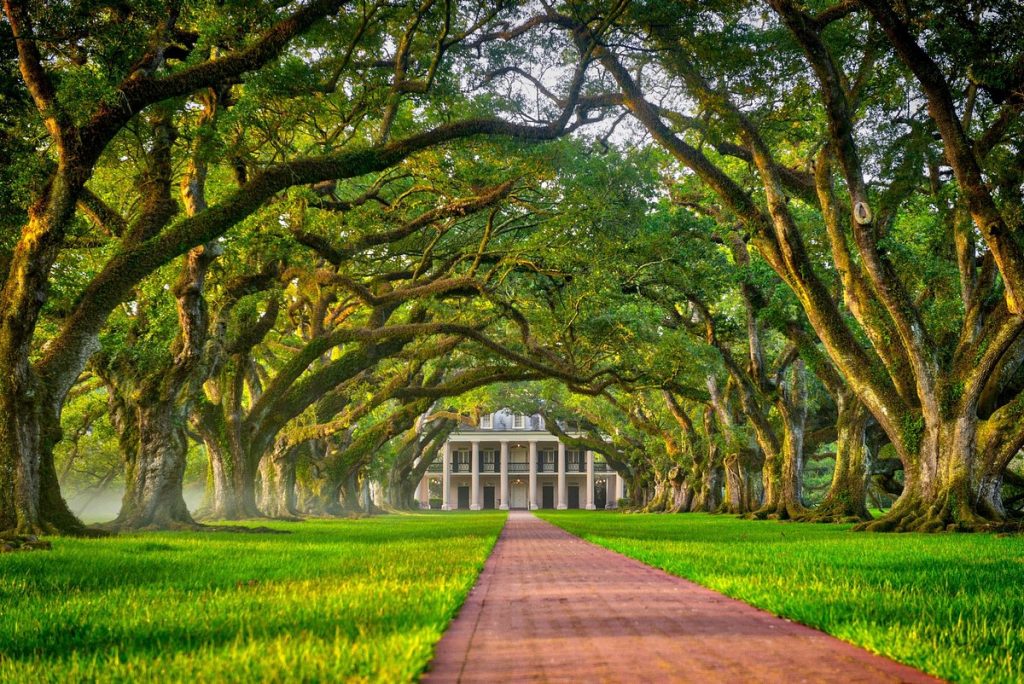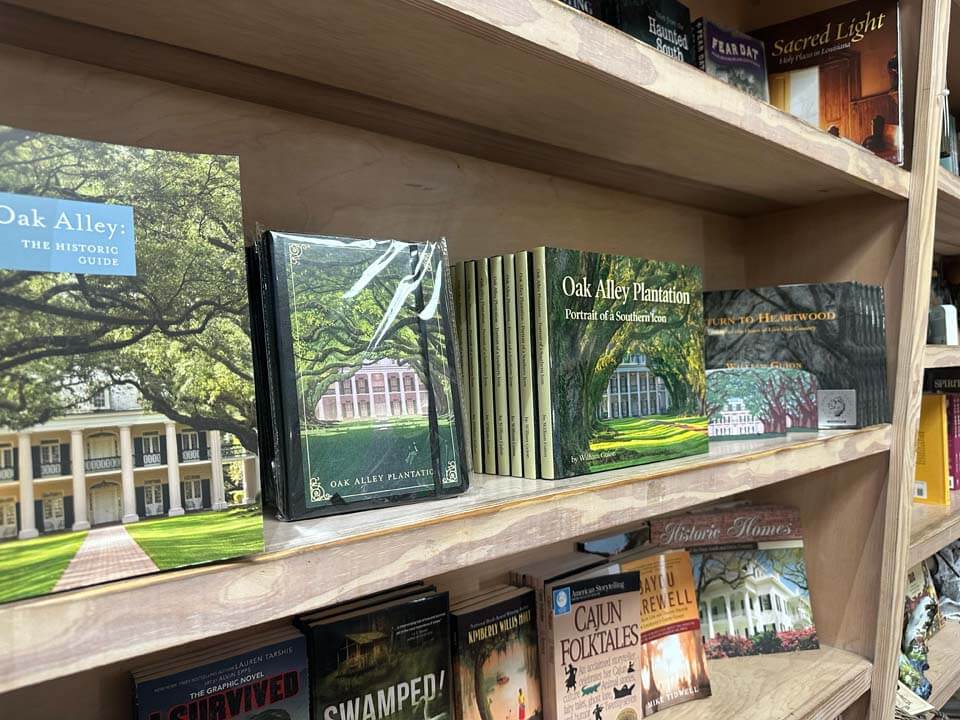Nestled along the banks of the Mississippi River in Louisiana, Oak Alley Plantation is a stunning piece of American history. This historic site is known for its magnificent oak trees, rich heritage, and captivating stories from the past. A visit here allows you to explore the beauty of the South while delving into the complex history of plantation life.
Overview of Oak Alley Plantation
When you arrive at Oak Alley, you are welcomed by a breathtaking avenue of 28 towering southern live oaks, which are over 300 years old. These majestic trees create a picturesque scene leading up to the plantation house, often regarded as one of the most photographed spots in the South. The plantation was built in the early 19th century by the Roman family and served as a sugar cane plantation, which makes its history even more intriguing.
Visitors are not just treated to beautiful landscapes; they also experience a deep cultural journey that explores the lives of both the wealthy plantation owners and the enslaved people who worked there. It’s this dual narrative that makes a tour of Oak Alley exceptionally rich and informative, shedding light on America’s complicated past.
Arriving at Oak Alley Plantation

As you drive towards Oak Alley, the picturesque landscape of Louisiana unfolds around you. The road lined with trees creates an inviting atmosphere, making it impossible to miss the plantation’s grandeur. Upon arrival, the Visitor Center offers you a warm welcome and provides essential information about the tour options available.
At the Visitor Center, you can purchase tickets, pick up a map, and gather essential information about the day’s events. Staff members are friendly and knowledgeable, ready to answer any questions you may have. They will also inform you about the various tour times so you can plan your visit accordingly.
The Guided Tour Experience
One of the highlights of any visit to Oak Alley is the guided tour of the plantation house. The tour provides historical context, highlighting the architectural features of the house and discussing the lives of the Roman family who built it. You’ll learn about the intricate design that combines Greek Revival styles and Southern charm.
The knowledgeable guides often share firsthand accounts and stories that bring the plantation’s history to life. As you wander through the elegantly furnished rooms, you’ll find yourself transported back to the 1830s, gaining insight into how the wealthy lived during that era. The guides emphasize not just the glamorous lifestyle but also the stark contrast faced by those who were enslaved on the plantation.
What Are the Best Family-Friendly Activities in Turks and Caicos?
By Town of traveller
Exploring the Grounds
After touring the manor, be sure to step outside and explore the beautiful gardens and grounds of Oak Alley Plantation. The outdoor area is as breathtaking as the interior, with manicured lawns, blooming flowers, and the striking historical oaks overshadowing the pathways.
You can also see the historical structures on the grounds, such as the sugar mill and slave quarters. These buildings add another layer of understanding to the plantation’s history, showing how sugar was processed and providing insight into the lives of enslaved people. Walking through these areas evokes a sense of the labor and struggles that shaped this plantation’s legacy.
The Oak Alley Experience
While exploring the plantation, you’ll come across various informational displays and exhibits that detail the history of the land, its people, and the evolution of sugar cane farming in Louisiana. The plantation is more than just a house; it is a memorial to the resilience and spirit of those who lived and worked on this land.
Don’t miss the chance to walk along the iconic oak alley, where the views are simply breathtaking. Standing beneath the sprawling branches of ancient oaks is an experience unto itself. You’ll appreciate how these trees have stood the test of time, witnessing the changes in the landscape and community around them.
Cultural and Educational Programs
Oak Alley Plantation emphasizes cultural awareness and education. Throughout the year, they host special events and educational programs that dive deeper into the history of the plantation and its role in American society. These events can range from historical reenactments to workshops focusing on traditional Southern cooking.
If you’re interested in more than just a day visit, consider attending one of these programs. They often host discussions on topics such as slavery, agriculture, and architecture, providing a more profound understanding of the historical context in which the plantation operated.
Dining at Oak Alley
After a day of exploration, dining options at Oak Alley offer a taste of Southern cuisine. The restaurant serves delicious meals made with locally sourced ingredients. You can enjoy a variety of dishes that reflect the flavors and traditions of Louisiana cooking.
Whether you opt for a hearty gumbo or a classic po’ boy, the dining experience is sure to satisfy your appetite. The beautiful setting of the restaurant, surrounded by nature and the ambiance of the plantation, enhances the meal further.
Shopping and Souvenirs

Before you leave Oak Alley, make sure to visit the gift shop. The shop features an array of items that showcase the region’s culture and history. You can find cookbooks, handmade crafts, and various memorabilia, allowing you to take a piece of Oak Alley home with you.
These souvenirs are great reminders of your enriching experience at the plantation and help support the preservation of this historic site. Additionally, purchasing items from local artisans fosters the craftsmanship and culture of the region.
Photography Opportunities
If you enjoy photography, Oak Alley Plantation provides some of the most stunning backdrops in Louisiana. From the grand oak trees to the beautifully restored plantation house, you’ll find countless opportunities to capture amazing photographs. The late afternoon light creates a mesmerizing glow, perfect for those Instagram-worthy shots.
Be sure to explore different angles and perspectives, and don’t hesitate to get creative. Many people leave with cherished photographs that remind them of their special day at the plantation.
Conclusion
In conclusion, a tour of Oak Alley Plantation is more than just a visit to a historic site; it’s an immersive experience that combines nature, architecture, and captivating storytelling. From the grandeur of the plantation house and the majestic oak trees to the poignant reminders of the lives of those enslaved, every element contributes to a rich narrative that is essential for understanding America’s history.
Whether you’re a history enthusiast, a nature lover, or simply looking for a unique travel experience, Oak Alley provides a memorable journey through time. By exploring this plantation, you will not only appreciate its beauty but also gain important insights into the complex and often challenging histories that shape our world today.
FAQs
1. How long does a typical tour of Oak Alley Plantation last?
A typical tour of Oak Alley Plantation takes about one to two hours, depending on whether you choose a guided tour of the house or explore the grounds at your own pace.
2. Are there any special events hosted at Oak Alley Plantation?
Yes, Oak Alley Plantation regularly hosts special events, including educational workshops, themed tours, and seasonal celebrations that focus on Southern culture and history.
3. Is photography allowed on the grounds and in the plantation house?
Photography is generally permitted on the grounds, especially for the beautiful landscape and oak trees. However, inside the plantation house, photography may be restricted to preserve the artifacts and decor.
4. Can visitors bring food and drinks to Oak Alley Plantation?
Outside food and drinks are not typically allowed, but there are dining options available on-site. The restaurant provides a variety of delicious Southern dishes for guests.
5. Is Oak Alley Plantation accessible for individuals with disabilities?
Yes, Oak Alley Plantation strives to be accessible for all visitors. The grounds and some areas of the plantation house are equipped to accommodate those with mobility challenges.








